The Dykes is also known as the five-masted schooner and is on the Sea Girt Artificial Reef off Sea Girt, New Jersey. When we want to get mussels for ourselves and our friends, the Dykes is always a good choice. If we can hook in near the bow, it is even better because the mussels are up off the bottom and there is no sand in them. Personally, I don’t eat mussels but everyone that we have brought them to has raved about them. Mussels may be great to eat but they are one of my favorite photo subjects. I like them because they usually are growing with frilled anemones, tubularian hydroids and barnacles.
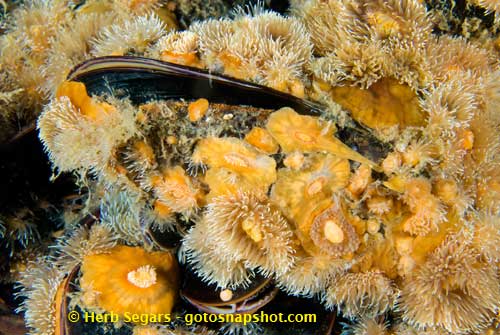
You can see how beautiful they look. We try not to harvest the mussels that are overgrown with life like these. It is just as easy to find clumps that have much less growth on them. While my dive buddy, Beth Dalzell, was gathering the mussels, I went wandering around on the bottom. One of the things that I found almost directly below Beth was a lobster pot that broke loose from its line and is now a home for a myriad of marine life. Lost pots are not good for either the lobstermen or for the marine life caught in them. If we find any that are still closed, we will do our best to open it up so that fish, lobsters or crabs don’t end up dying in the pot.
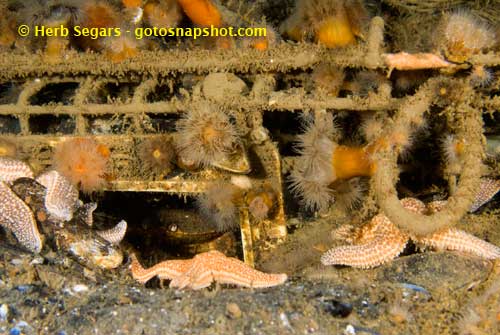
After shooting a number of photos of the pot, I started my search for new subjects. I moved around the bow of the Dykes and found a little skate. It was not a very willing subject but I made the best of my time and managed to get a number of pretty good photos.
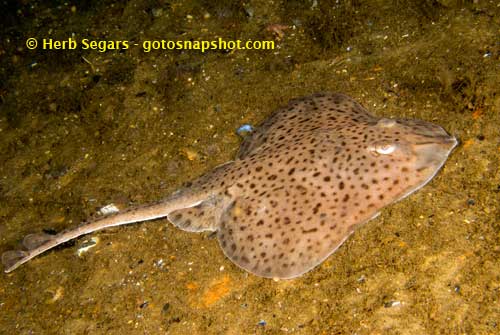
The sand around the outside of the Dyke’s hull is also a good place to find sand dollars. You will recognize them by their five petal flower design on their shells. I wonder how many of you know that the sand dollar is really a sea urchin. It has tiny spines on its shell and when a sand dollar dies, all the spines fall off – leaving a pure white shell.
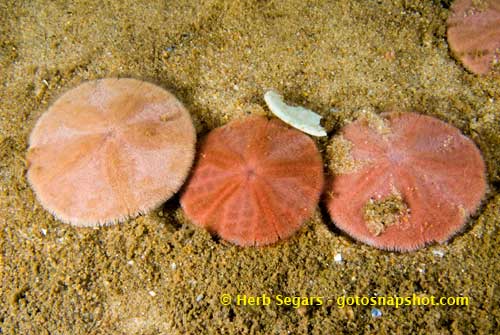
After my wonderful tour around the bottom, I headed back up onto the bow where Beth was playing around with the cunners (bergalls). She was cutting up blue mussels and feeding the fish. She looked like she was having a great time. As luck would have it, while I was watching her, a lion’s mane jellyfish floated by and I was able to stand up on the bow and photograph it. Normally, I see them in the upper water column and I have to photograph them while holding onto the anchor line or let go of the line and hope that I don’t drift too far away. This was a wonderful opportunity for me and I loved every minute of it.
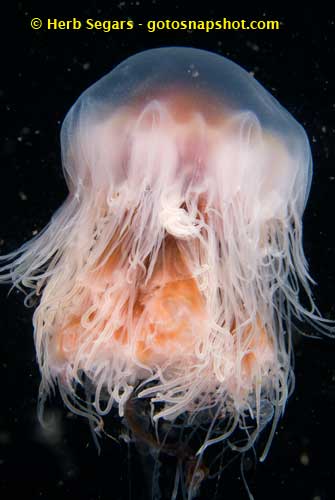
Before I knew it, it was time to end the dive. On the way up the line, I looked for more new subjects but the jellies were lower in the water column. While Beth and I did our safety stop at fifteen feet, she took some photos of me with her point-and-shoot camera in an Ikelite housing. Beth does not have a strobe yet so all her photos are taken with available light. A few days later, I received a photo of myself by e-mail. I really don’t like being on the other side of the camera but I really like Beth’s photo so I thought that I would end this story with that photo. Great Job, Beth!
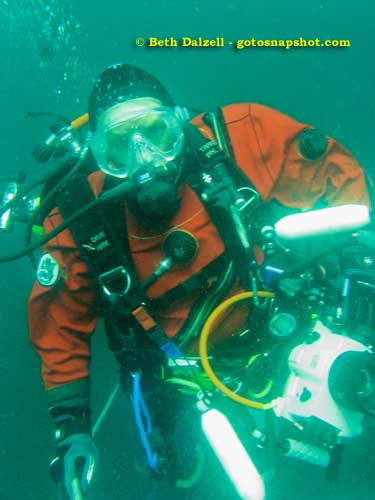
© 2008, Herb Segars. All rights reserved.

